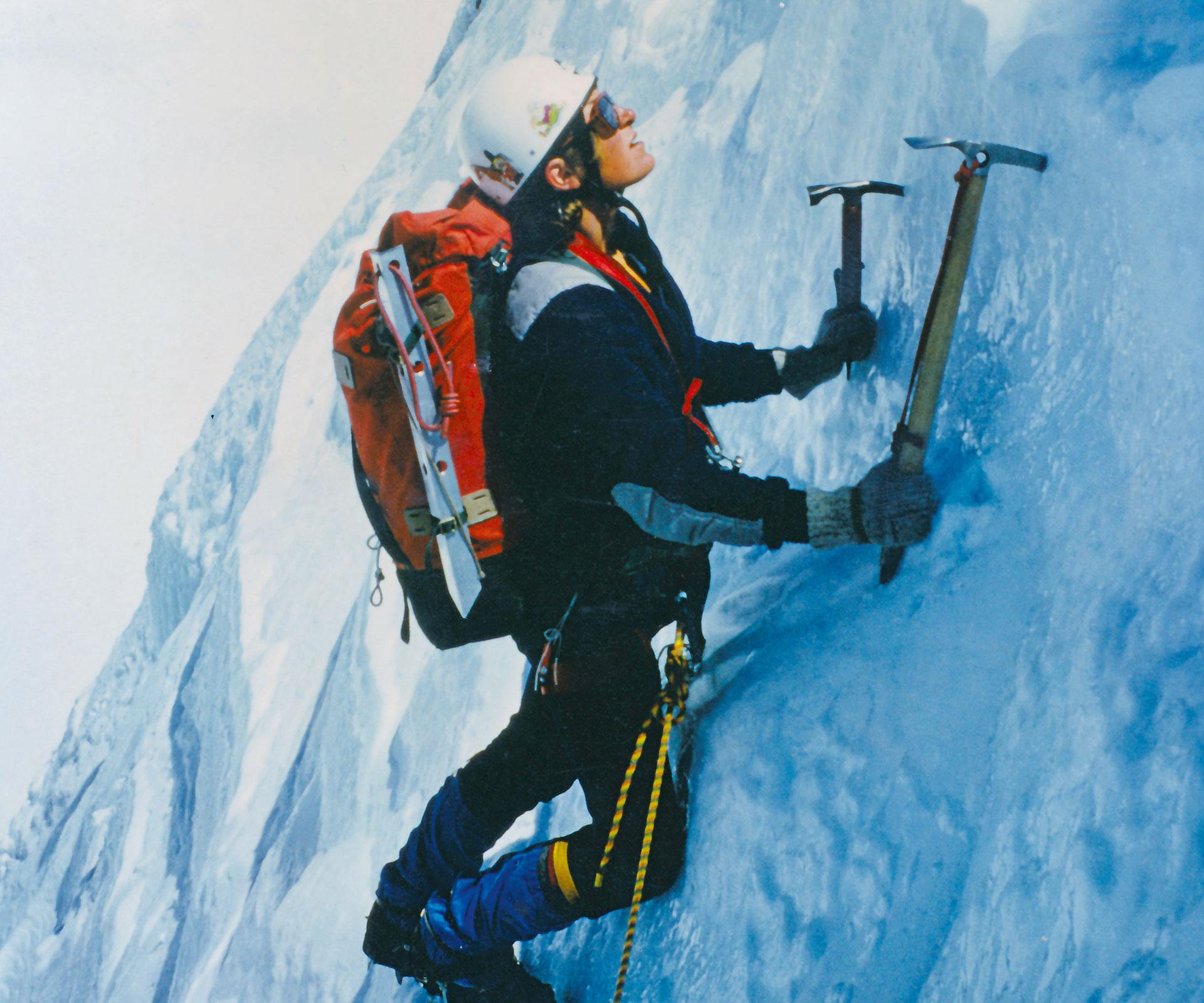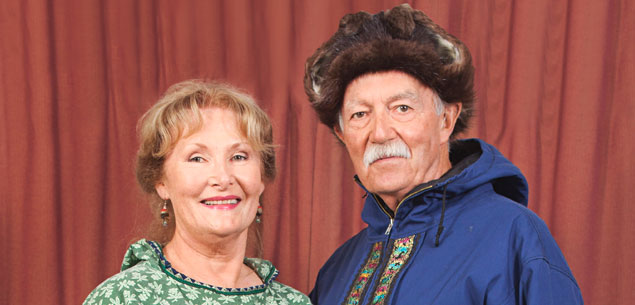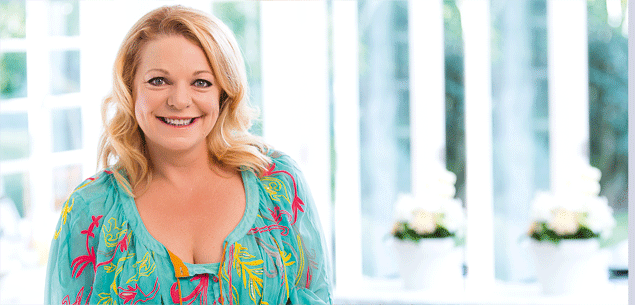Burried deep in an emergency snow cave she’d dug during an avalanche, unable to move anything but her hand, mountaineer Lydia Bradey thought she would die a slow, terrible death on Mt Kedarnath in the Himalayas – until a miracle happened.
Despite the avalanche leaving a smooth surface with no indication of where the then 26-year-old was, her expedition partner Jon Muir started digging directly above her head – an act of pure instinct that led him to her outstretched hand and allowed him to pull her out.
That was three decades ago, but it is still an “epic” at the top of Lydia’s list of greatest mountain lessons because it was then she realised she had the mental fortitude to climb at high altitude.
It was this mental strength combined with masses of hard work and training that led Lydia to tick off an impressive list of records – including being the first woman to climb Everest without oxygen.
The 53-year-old, who lives in Wanaka with partner Dean Staples (the couple both work as high-altitude guides), has just released her memoir Going Up is Easy. The book is a celebration of her many feats in mountaineering, focusing on a period in the 1980s when very few Kiwi women climbed professionally.
She describes a time when the inability to reliably predict weather conditions meant greater danger, and judgement calls that could end or save lives. Sometimes after spending months organising an expedition, followed by weeks hiking through the snow and ice to lay ropes and set up camps, teams would have to simply turn around and go home. But she says a successful climber has to keep perspective.
“You have to be able to persevere and see the bigger picture,” she says. “You have to be able to enjoy a whole lot of separate things, like the view, a sunset, or the fact you are staying in a hut with a whole lot of very interesting people.”
For many, this level of effort in the face of so much risk is hard to imagine, but from the moment Lydia first experienced the mountains she was hooked. She was 14 and on camp in Arthur’s Pass when she tramped for the first time – and was captivated by the “magical world” she found herself in.
She joined tramping and climbing clubs in Christchurch, and was taken under the wing of experienced mountaineers Jim and Margaret Clark. Margaret put pressure on the Canterbury Mountaineering Club to admit female members, allowing Lydia to join in 1980 – her membership prompting outrage and even resignations from some club members. However, she became one of the club’s most active climbers and, although she missed the companionship of girls her age, was fiercely focused on the sport.
Standing out from the group was no issue for Lydia, whose single mum Royce encouraged independence from a young age. At the age of 17, Lydia left home to take a job as a gardener in the Aoraki region to be near the mountains. She took every opportunity to climb – ticking off accomplishments that included the grand traverse of Aoraki/Mt Cook and becoming the first woman to scale the Balfour Face, Mount Tasman.
She left New Zealand at 19, honing her skills as a rock climber on the giant walls in Yosemite, America, and then in ice climbing in Scotland while working menial jobs and living off as little as $30 a week so she could save for her climbing adventures. Lydia’s training gave her the confidence to tackle the types of mountains she truly desired – high altitude (over 8000m) and in the Himalayas.
“Testing myself, finding ways to engage my brain and body to overcome technical difficulties or my fear of falling, coupled with my appreciation of the human side of climbing – working with a team… provided me with all the ingredients of a full life, one I wanted to live,” she writes in her memoir. “I needed mountaineering to furnish the core of my existence.”
So much so that at 26 Lydia chose to be sterilised – she was sure she didn’t want children, and even more sure that she wanted to be the best mountain climber she could be.

From left to right: Lydia, at 20, on a big wall climb in America. Lydia as a child with her mother, Royce, enjoying the snow.
Lydia travelled to the Himalayas for the first time in 1984, where she attempted Cho Oyu, Gangkhar Puensum, Kedarnath Dome, and then Gasherbrum 1 – at the same time as a team of Pakistani climbers who died in a storm trying to reach the peak. Lydia and her team had not attempted the climb during the bad weather, but heard the dreadful event play out over radio from base camp. When the storm subsided they searched out their friends, carrying their pulverised bodies back to camp.
Even such tragedy didn’t derail her focus, however, and Lydia rallied a team to climb nearby Gasherbrum II, where she became the first Australasian woman to climb an 8000m peak.
She writes: “After that climb I came to realise that the more energy you put out, the more likely you were to be included in other climbers’ plans. If I was hard-working and good fun to be around, I would get ahead in my drive to be a high-altitude climber.”
But she also faced criticism, with some climbers beginning to view her as being overly opportunistic. “They began to joke about me changing allegiances, of being ‘ruthless’ in my desire to tick off summits.”
It is testament to Lydia’s self-belief that she kept on. Back in New Zealand she joined forces with Rob Hall, Gary Ball (both now deceased) and Bill Atkinson, and applied for a permit to climb K2 and Everest – where they hoped to become the first New Zealanders to climb the latter without oxygen.
It was not easy – permits and sponsorship were difficult to get. The team spent months chasing both, and Lydia, who had no car, describes riding her bike to meeting after meeting, trying to drum up funds. They were successful, but only just, leaving on an extremely tight budget in 1988 to attempt K2.
After arriving in Dassu, Pakistan, they made the two-week trek to the base of K2, accompanied by 73 Balti porters each carrying 25kg of food and equipment. On reaching the mountain they began work, carrying loads of icefall up the mountain to establish an advanced base camp alongside American climbers who were sharing the expedition.
Tensions were high between Lydia and the others in the Kiwi team. Lydia believes the conflict was not a result of sexism but a clash of characters, specifically between her and team leader Rob, who wanted her to spend less time with the Americans – a request she refused. “Sometimes I wind people up because they can’t control me,” she says, reflecting on the experience.
Her bond with the American team grew and she loved sitting in a tent in the evenings sharing stories with her companions. It is a theme that runs through her mountaineering history. “I get a huge kick out of really good company. I love spending quality time with interesting people who broaden my world with their stories.”
But even rest time on the mountains could come with danger. “One evening at camp, five of us were crowded into a tent when we heard a ripping sound. Poised just three centimetres above Aid’s [Adrian Burgess’] head was a massive dagger-like icicle which had fallen from the cliff above – we wore helmets for the rest of the night!”
The conditions were too perilous to climb K2 during those three months, but Lydia says the experience was worth it – she left acclimatised to being at altitude and boosted by the beauty of the mountain. They travelled from K2 to Everest, where relations in the Kiwi team were still strained. Lydia again became close to another team – this time the Slovaks.

Lydia at camp two, the morning after coming down from the South Col on Everest in 1988.
After weeks preparing for the journey, both teams headed to camp two (established at 6500 metres) to begin their climb, when a storm came in. Lydia decided to go back to base camp to conserve energy while her team-mates remained. “Sitting in a tent at 6500 metres doesn’t make me strong, and I was really acclimatised by that point – I was fit and fast,” she says of the decision.
The Slovaks, a more experienced team than the Kiwis, had also decided to go down to base, affirming Lydia’s judgement. “The New Zealanders stayed [at camp two] for five days,” she remembers. “And you don’t drink or eat enough at that height unless you have someone looking after you.”
Lydia returned to camp two when the weather cleared, as the Kiwi team was leaving to attempt the South Pillar. They failed, returning to camp that day. On their advice, she planned to take a different path on her own, travelling the Southeast Ridge, Hillary’s route.
It was 2am when she left the safety of her tent, alone, for the climb of several thousand metres, full of anticipation and excitement. She believed she had the technical skill to climb the mountain, but was unaware of the conditions she would face.
As planned, she arrived at camp three (7300m) at dawn, where she rested and rehydrated for three hours, and camp four (7906 metres) by midday. Here she rested for 12 hours – melting snow to drink in between sleeping – before her summit bid at midnight. She expected it would take her 10-13 hours to reach the top.
It was pitch black when she left, checking and rechecking her crampons, which had to stay fastened in the steep terrain. She was in the wake of a Catalan team who were using oxygen, meaning they were faster.
Memorising the terrain so she could find her tent on the way back, Lydia reached for her water bottle, which she discovered was frozen, as was her camera. At this point she describes feeling “vulnerable” – a huge under-statement for being on the tallest mountain in the world, by herself, without oxygen.
She was already having trouble breathing when the Catalan team retreated from their attempt, belaying one of their climbers, who was ill with altitude sickness. “You will die,” they warned her. But Lydia made the decision to keep going.
“I had spent years visualising the goal of Everest and I was determined to reach the top,” she writes. “I had to change the way I thought. Instead of accepting there was little chance of surviving if I climbed Mt Everest, I had to believe there was every chance of climbing Mt Everest if I survived.”
She says the rest of the climb was hazardous – every step took a lot of willpower and she became ever conscious of the risk.

With her team after climbing Gasherbrum II in Pakistan, 1987 – a feat that made Lydia the first Australasian woman to climb an 8000m peak.
You would expect that reaching the summit of the highest mountain in the world would be a moment of elation. Not so. Lydia was shattered, wanting only rest when she reached the top. But she could only give herself 10 minutes.
“Once you are that high and have no oxygen, every 100 metres makes a huge difference,” she explains.
The trip down was frightening. She panicked twice – first at the Hillary Step, where the sheer drop on either side made her want to sit down and not go on, a choice that would have certainly meant death. The second was at the South Col, where, exhausted and disorientated, she was unable to find her tent. With the help of a Sherpa, she was pointed in the right direction, and she crawled some of the way back on her hands and knees.
At camp two the next day she did not get the warm reception she’d hoped for. There she discovered her New Zealand team-mates had left for Kathmandu while she was still on the mountain.
She was shocked – there had been tensions, and the team had fallen out, but why hadn’t they waited to make sure she was safe?
She continued to base camp the next day, boosted by the anticipation of seeing her Slovak friends. They had left a day later than Lydia to climb Everest and she looked forward to reuniting. It had occurred to her that she might not return from her expedition, but it never crossed her mind that the strong, skilful Slovak team might not.
“They were going to climb Everest and then we were going to drink really good quality Russian Champagne to celebrate. I was going to come back the next year to the Himalayas on an expedition with them, the best climbers in the world – my life could not have been much better.”
At base camp she discovered that Peter Bozik and Jaro Jasko had summited, but soon after a big wind came up the mountain and radio contact was lost. “This huge storm came down on us,” explains Lydia sadly. “It was freezing and really wild at base camp – we hadn’t had a storm like it. They just froze up there.”
The deaths of fellow climbers is something Lydia has had to endure much of – most recently in May’s devastating Nepal earthquakes, which claimed more than 8600 lives, including five Sherpas who worked for Adventure Consultants, the company that employs Lydia and Dean.
The grief of losing her Slovak friends hit Lydia hard on the two-week walk out of Everest. But matters were about to get much worse. She arrived in Kathmandu to discover her team-mates had disputed her climb.
“When I got back, the sh*t hit the fan,” she says of the discovery Rob had issued a statement denouncing her climb. His argument was she had no proof of her ascent (her camera had frozen), she could not have made the summit in the time she claimed, and he drew attention to the fact she had no permit for the climb. (Lydia says in her defence none of the team did – and this was common practice at that time.)

Lydia and her partner Dean in 2014 on the summit of Peak Lenin (7134m) in Kyrgyzstan, Asia.
It was years before Lydia’s achievement was finally given recognition. That acceptance was the result of backing from some major names in climbing, such as Graeme Dingle and Elizabeth Hawley, as well as two separate investigations by journalists.
Lydia felt her climb was truly accepted when she was made a keynote speaker at the Women’s Everest Summit Symposium in Japan in 1995 and was introduced as the first woman to climb Everest without oxygen.
“My ascent was much more accepted overseas in hardcore climbing circles like the Basques, the Spanish and in the Himalayas – way before New Zealand.”
There is no doubt the incident knocked her climbing career – she was banned from Pakistan for three years, but the New Zealand Alpine Club issued a much harsher sentence, refusing to back her on any other international trips for the same period.
She took time out from climbing in 1989 and studied to become a physiotherapist. But the strong pull of the mountains drew her back to a career as a mountain guide in 2000.
Climbing has taken a toll on Lydia physically – she has just had a hip operation – but she has no regrets.
“A few years ago a fellow mountain guide interviewed 20 female climbers internationally, asking, ‘What gets you there?’ I was the only person who didn’t answer, ‘The challenge,’” she explains.
“I’m passionate about the mountains, they appeal to me spiritually and the aesthetics are huge for me. I’m driven by being able to see as much as I can, and sharing that experience is so rewarding. Some of my recent guiding experiences have been the best climbs of my life.”

Going up easy by Lydia Bradey and Laurence Fearnley, Penguin/Random House, $38.
Words by: Nicola Russell
Photos by: Lydia Bradey collection, opening image courtesy of Jon Visser.


